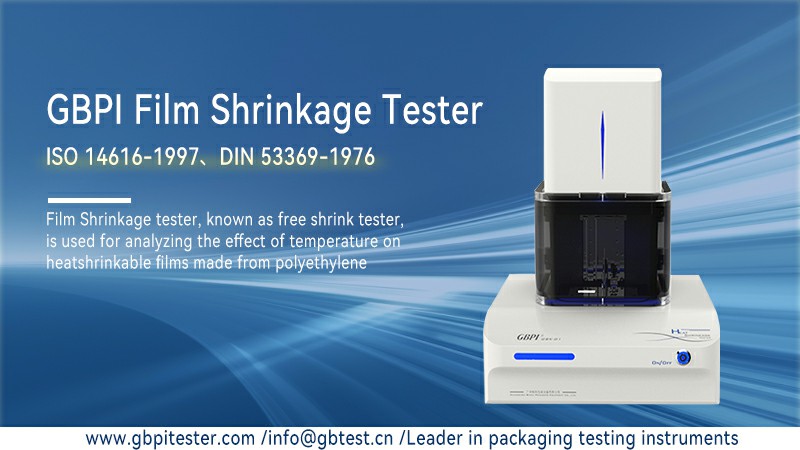Introduction to Shrink Film Testing

Shrink film is an indispensable component in the packaging industry, ensuring products are securely wrapped and protected. Testing shrink film involves various procedures to evaluate its performance and suitability for different applications. Understanding these testing methods is crucial for ensuring the quality and durability of the packaging materials.
Types of Shrink Film
Shrink films come in several varieties, each with unique properties:
Polyethylene Shrink Film
Polyethylene shrink film is known for its durability and cost-effectiveness. It is widely used for wrapping large, heavy items.
Polyvinyl Chloride (PVC) Shrink Film
PVC shrink film offers excellent clarity and a high shrink rate. It is commonly used for packaging consumer goods.
Polyolefin Shrink Film
Polyolefin shrink film is prized for its versatility and superior strength. It is used in various industries due to its balance of strength and clarity.
Fundamental Properties of Shrink Film
To ensure the efficacy of shrink films, several key properties must be tested:
Shrink Temperature
Shrink temperature is the specific heat level at which the film begins to shrink. It is crucial for determining the suitability of the film for different applications.
Shrink Percentage
Shrink percentage measures the degree of shrinkage when the film is exposed to heat. This helps in assessing the film's ability to conform to the shape of the product.
Tensile Strength
Tensile strength refers to the film's resistance to breaking under tension. High tensile strength is essential for ensuring the film can withstand the stresses of packaging.
Clarity and Gloss
Clarity and gloss are visual properties that affect the appearance of the packaged product. High clarity and gloss enhance the product's presentation.
Seal Strength
Seal strength measures the integrity of the film's seals. Strong seals are vital for maintaining the product's protection and preventing tampering.
Preparing for Shrink Film Testing
Before testing shrink film, proper preparation is necessary:
Required Equipment
Testing shrink film requires specialized equipment, including tensile testing machines, glossmeters, and environmental chambers.
Sample Preparation
Samples must be prepared according to standardized dimensions and conditions to ensure consistent and accurate testing results.
Shrink Temperature Testing
Methodology
Shrink temperature is tested by gradually heating the film and recording the temperature at which it begins to shrink.
Analyzing Results
Results are analyzed to determine if the shrink temperature aligns with the film's intended use, ensuring compatibility with packaging processes.
Shrink Percentage Testing
Procedure
Shrink percentage is tested by heating a film sample and measuring the change in dimensions.
Data Interpretation
Data is interpreted to evaluate the film's ability to shrink uniformly and cover the product effectively.
Tensile Strength Testing
Testing Instruments
Tensile strength testing involves using a tensile testing machine to apply controlled tension to the film until it breaks.
Step-by-Step Process
The process includes clamping the film, applying tension, and recording the force required to break the film. This measures its strength and durability.
Clarity and Gloss Testing
Visual Inspection
Visual inspection involves assessing the film's clarity and gloss by comparing it to a standard or reference.
Use of Glossmeters
Glossmeters are used to quantify the gloss level of the film, providing a precise measure of its reflective properties.
Seal Strength Testing
Importance in Packaging
Seal strength is critical for ensuring that the film can form strong, reliable seals to protect the product.
Testing Techniques
Seal strength is tested by sealing two pieces of film together and measuring the force required to separate them.
Puncture Resistance Testing
Purpose
Puncture resistance testing determines the film's ability to withstand punctures from sharp objects, which is essential for protecting the packaged product.
Testing Process
The film is subjected to controlled puncture tests, and the force required to puncture it is recorded.
Impact Resistance Testing
Significance
Impact resistance measures the film's ability to absorb energy without breaking, crucial for protecting products during transportation.
Methodologies
Impact resistance is tested by dropping a weighted object onto the film and measuring its response.
Tear Resistance Testing
Relevance
Tear resistance is important for ensuring the film can resist tearing under stress, maintaining the integrity of the packaging.
Test Execution
Tear resistance is tested by initiating a tear and measuring the force required to propagate it.
Environmental Stress Crack Resistance (ESCR) Testing
Definition
ESCR testing assesses the film's resistance to cracking under environmental stressors, such as chemicals and temperature fluctuations.
Testing Procedures
The film is exposed to stressors in a controlled environment, and the time to crack formation is recorded.
Thermal Shrinkage Testing
Concept
Thermal shrinkage testing measures the film's dimensional changes when exposed to heat.
Testing Steps
The film is heated, and the change in dimensions is recorded to assess its shrinkage properties.
Dimensional Stability Testing
Why It Matters
Dimensional stability ensures the film maintains its dimensions under various conditions, crucial for consistent packaging performance.
How to Test
Dimensional stability is tested by subjecting the film to different environmental conditions and measuring any changes in dimensions.
Optical Properties Testing
Transparency
Transparency testing measures the film's ability to allow light to pass through, affecting product visibility.
Haze Measurement
Haze measurement quantifies the film's cloudiness, which can impact the visual appeal of the packaged product.
Chemical Resistance Testing
Testing for Solvents and Acids
Chemical resistance testing assesses the film's durability when exposed to various chemicals.
Analysis of Results
Results are analyzed to determine the film's suitability for packaging products that may be exposed to harsh chemicals.
Moisture Barrier Testing
Water Vapor Transmission Rate (WVTR)
WVTR testing measures the film's ability to resist moisture transmission, critical for protecting moisture-sensitive products.
Testing Methodology
The film is subjected to moisture, and the rate of transmission is measured and recorded.
Oxygen Barrier Testing
Oxygen Transmission Rate (OTR)
OTR testing measures the film's resistance to oxygen transmission, important for preserving the freshness of perishable products.
Testing Process
The film is exposed to an oxygen-rich environment, and the rate of oxygen transmission is measured.
Conclusion
Summary of Testing Procedures
Testing shrink film involves a comprehensive evaluation of its properties to ensure it meets the requirements of various packaging applications.
Importance of Comprehensive Testing
Comprehensive testing is essential for guaranteeing the performance and reliability of shrink film, ensuring products are well-protected and presented attractively.

 info@gbtest.cn
info@gbtest.cn



 en
en ru
ru es
es ar
ar

